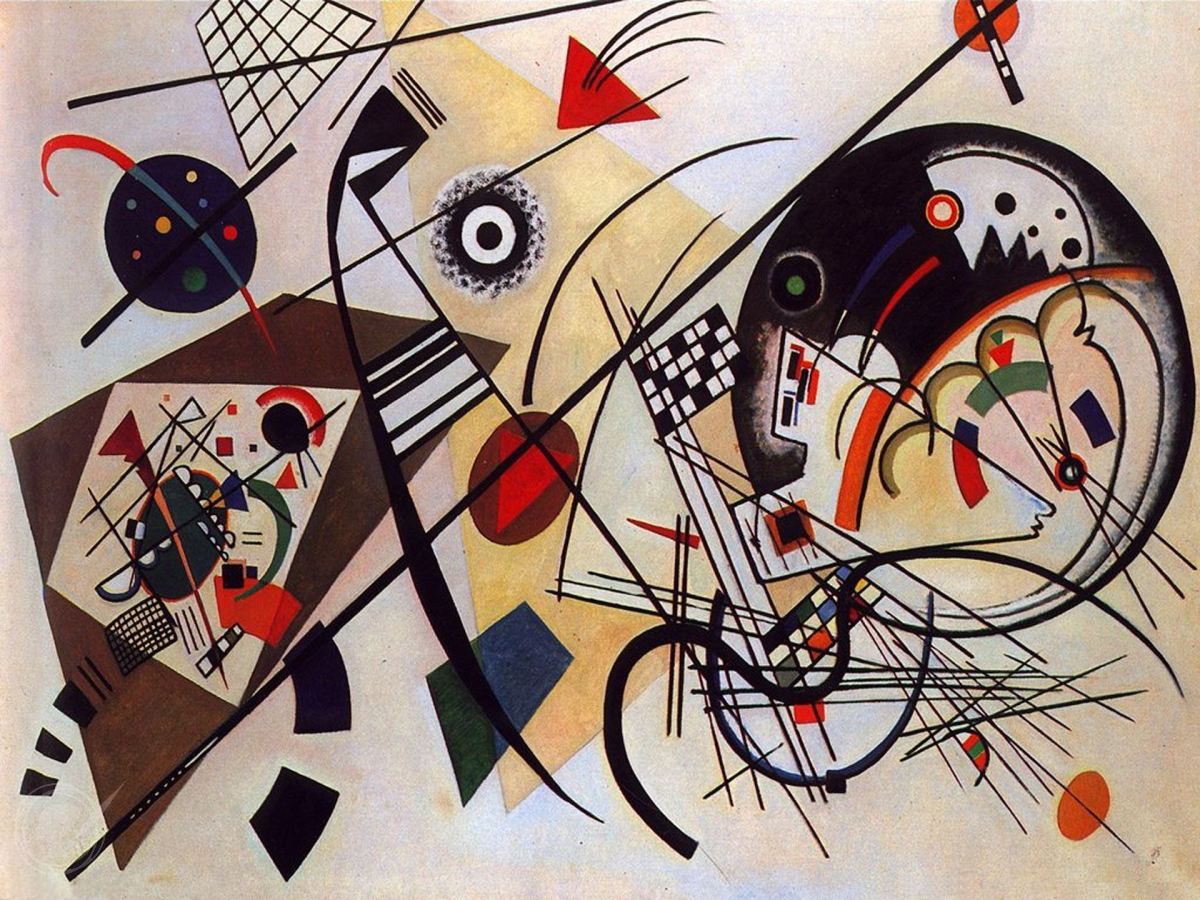Throughgoing Line
Throughgoing Line (Durchgehender Strich, 1923) by Wassily Kandinsky is a striking Expressionist work measuring 140 cm x 200 cm, housed at the Thyssen-Bornemisza National Museum in Madrid. Dominated by a diagonal black line cutting across a field of geometric and organic forms, the painting exemplifies Kandinsky’s belief in the spiritual power of abstraction. With vibrant color contrasts and a rhythmic composition, it reflects his exploration of synesthesia, color theory, and emotional resonance. Created during his Bauhaus years, this work bridges the gap between structured design and inner expression, marking it a key milestone in the evolution of modern abstract art.
Ratings / Reviews
Información adicional
| Dimensions | Original: 140 cm x 200 cm, Small: 56 cm × 80 cm, Medium: 84 cm × 120 cm, Large: 112 cm × 160 cm |
|---|
$316.00 – $1,120.00Price range: $316.00 through $1,120.00
Painted in 1923 during a decisive phase of his career, Throughgoing Line (Durchgehender Strich) reflects Wassily Kandinsky’s mature engagement with abstraction, compositional geometry, and the spiritual underpinnings of modern art. Executed in oil on canvas and measuring 140 by 200 centimeters, the work is now housed in the Thyssen-Bornemisza National Museum in Madrid. It occupies a key place within the Expressionist movement, yet it resists strict stylistic classification, drawing on the principles of Constructivism and the evolving Bauhaus aesthetic.
The composition is anchored by the bold diagonal of the “throughgoing” black line, stretching from the lower left to the upper right. This element operates as a visual axis, structuring the interplay of forms and colors that animate the surface. Surrounding it, circles, triangles, trapezoids, and irregular planes are arranged across a luminous beige ground. These geometric elements are punctuated by organic curves and vivid accents of red, blue, and yellow, which bring dynamism and balance to the arrangement.
Kandinsky’s theoretical approach, articulated in his seminal text Point and Line to Plane (1926), is embedded in this composition. He maintained that each form and line held an inherent emotional resonance, capable of conveying states of mind and spiritual truths without reference to the material world. In Throughgoing Line, the combination of sharp linearity and fluid contours evokes the interplay of rational order and intuitive freedom—a central dialectic in Kandinsky’s art.
Created during his tenure at the Bauhaus in Weimar, the painting reflects the institution’s emphasis on unity between structure and expression. Kandinsky’s interest in synesthesia—the blending of sensory experiences—infuses the work with a musical sensibility. The painting reads as a visual orchestration, its diagonal “melody” supported by harmonic intervals of form and color. The contrasts of warm and cool hues enhance spatial tension, making the composition seem to pulse with rhythmic energy.
While the work is firmly rooted in the non-objective language that Kandinsky helped pioneer, it also communicates a universal vision. By organizing forms into a harmonious yet dynamic composition, he sought to create an art of “spiritual necessity”—a visual language that could speak directly to the viewer’s inner life.
Throughgoing Line remains a landmark in the evolution of abstract painting, bridging the expressive intensity of early 20th-century Expressionism with the formal clarity of the Bauhaus. Its enduring power lies in its balance of precision and emotion, a synthesis that continues to resonate with audiences nearly a century later.


